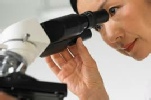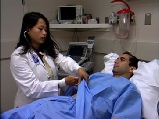
VirtualVillageMom
Reliable Information for Happier, Healthier Lives

What Do Epidemiologists Do?
Epidemiologists are people who study the cause, transmission and control of diseases. Some epidemiologists use special tools that help them identify risk factors for illness or death. In the case of an outbreak, for example, the epidemiologist would first make sure she knows what disease, illness or cause of death she is investigating. It is important to verify whether or not it is a case of food poisoning or if there is another cause for the outbreak, it is equally important to determine if in fact, there is an outbreak at all. After confirming that indeed people have become ill or died because of food poisoning, the epidemiologist will make sure she has the supplies she needs, and that all travel and administrative arrangements have been made, if necessary. She would then make sure that what she is dealing with is truly an outbreak by taking a look at hospital and health department records, to determine whether or not the number of incidents is unusually high.
After checking the records and reviewing clinical results, she will have to determine where the illness started; was it the food or the water? Who supplied the food or water, and what is the supplier’s source? She will then interview staff associated with the event, to gather information about patient characteristics, the disease or illness itself, the timing of the outbreak, and the location.
Once all the information has been compiled, she will come up with a hypothesis that explains what happened. This will address the source of the cause, how it got into whatever it did, and what kind of exposure caused the illness. Having open discussions with people who have possibly been exposed, as well as meeting with those who have already become ill in their own homes, and searching rooms and refrigerators for clues is all part of the process. Hypotheses will then be tested if necessary.
Any hypotheses will include the source and cause of the outbreak, as well as how it was transmitted. She will then evaluate her hypothesis by checking her facts and numbers for actual statistics. This can be done by comparing the hypothesis with established facts, or by testing, using analytic epidemiology. The comparison method is used when the evidence is so strong that the hypothesis does not need to be tested. If the evidence is not so clearly conclusive, then cohort and case-
If necessary, the Epidemiologist will fine-
After the outbreak, the USDA implemented new regulations governing the meat industry. All these cases involve hundreds of people eating the same foods and getting sick or dying as a result; therefore making them three incidents worth reviewing in food poisioning case. The Epidemiologist would want to know how these situations were handled and whether or not the methods could have been more effective, or will be helpful in her current set of circumstances. Finally, she will write a report about what she found, and share it with local health authorities, who will then implement those measures (n.a.CDC, 2004).
The three measures that can be used in this case are Morbidity, Mortality, and Cohort. Morbidity is ill health due to any cause and is a term that can be used to refer to any kind of illness or the degree to which an illness affects a patient. To find the morbidity rate, incidence and prevalence rates are used.
The crude rate is often confused with the mortality rate. The mortality rate reveals how many people are dying from a particular illness during a particular time frame, amongst a specified group of people, whereas the crude rate identifies the total number of deaths per thousand people. A cohort study is conducted by interviewing all guests regarding what they ate and whether or not they became ill. With that information, an attack rate can be calculated, which gives an indication of how quickly others will become ill.
Now you know what epidemiologists do! If you’re interested in becoming an epidemiologist, get your undergraduate degree in whatever you want; although something involving biology, science, and math would be best. Then go on to get your Master’s degree in Public Health with a major in Epidemiology. You will be able to find work as an epidemiologist with a Master’s degree, but, to improve your efforts as well as your income, get a doctorate degree as well.
References
Public Health Online: A Guide to Careers in Epidemiology: Retrieved from: http://www.publichealthonline.org/epidemiology/
Bureau of Labor Statistics: Retrieved from: https://www.bls.gov/ooh/life-
By Donna R. Turner, MPH, CHES

